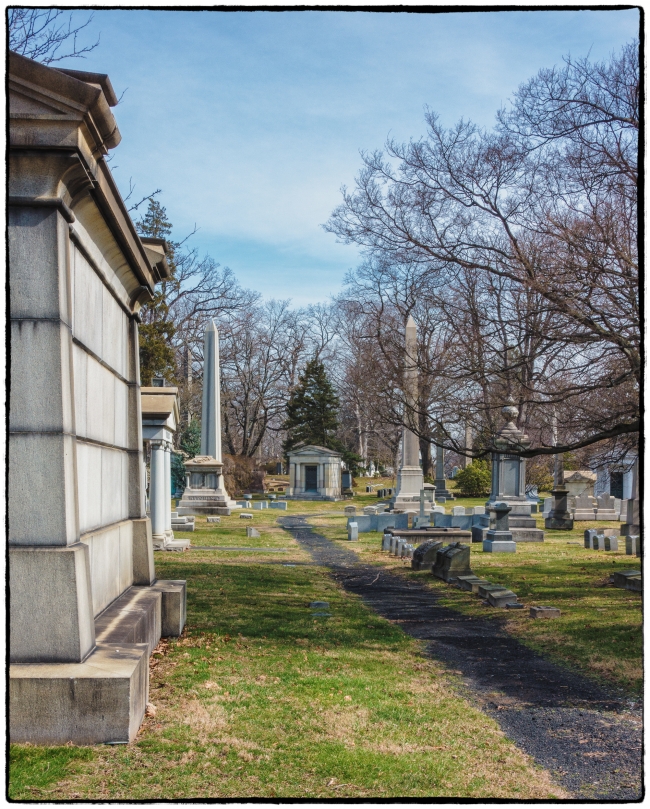For New York in Winter it was a nice day (February 27) so my friend George and I decided to go down to Woodlawn Cemetery in the Bronx where George grew up. We’d read that you had to check in at the office to register if you wanted to take pictures. They don’t object to people taking pictures, nor do they charge a fee but they ask you fill out a form (indicating the nature of your project and explaining their rules ) and show id. They then give you a copy of the signed form for you to show if asked. Security is tight. During our short visit we three times encountered security vehicles, the officers politely asking us what we were up. We explained that we had been to the office and filled out the form and they continued on their way (strangely nobody actually asked to see the forms. Possibly we didn’t look like professional photographers as I was using a Sony RX100 and NEX 5N rather than a huge DSLR with large lenses hanging all over the place).
This place is vast. We got a map from the office and set off walking. I had the Keister book (see below) with me so I had some idea of what I wanted to see. After we’d walked for a while we realized we were nowhere near where we wanted to be so we backtracked to the car and drove to the area of interest (stopping at a few interesting looking mausoleums along the way.)
This will be the first of about twenty posts on Woodlawn.
We spent about three hours walking around and by then my back was starting to hurt so we left. George drove us around some of the areas where he grew up and then we had lunch at what George referred to as the last Jewish deli in the Bronx for sandwiches (reuben for me, pastrami for him), pickles and cream soda. Then back to his house for a couple of beers at his house before calling it a day.
If you want to study New York City’s architecture, forget about craning your neck or dodging taxicabs. Just hop on the Number 4 subway north towards the Bronx and sit down and relax. The Woodlawn Cemetery – it’s the end of the line. Woodlawn’s 1,300 plus mausoleums are a study in almost every architectural style ever since there was architecture. Indeed, there is no better collection and condensation of architectural styles anywhere in he United States, and maybe the entire planet.
Woodlawn Cemetery was founded in 1863. At the time the land was part of Westchester County; then in 1874, New York City gobbled up the land and Woodlawn became part of the Bronx. Woodlawn was originally laid out using the rural cemetery ethos that was popular at the time. The design was altered a few years after the cemetery opened to conform to a more open landscaping theme, called the landscape-lawn plan, which meant eliminating fences and encouraging plot owners to have centerpiece monuments surrounded by smaller gravestones. The vast lawns became the perfect canvas for the glorious mausoleums that punctuate the immaculate grounds. By the end of the nineteenth century Woodlawn had eclipsed Green-Wood in Brooklyn as the place for New York’s movers and shakers to construct their eternal home. The 400-acre cemetery has over 300,000 burials. The addition of a large community mausoleum, a fair amount of underdeveloped land, the rise of cremation (which requires less space), and a well managed endowment fund assures that Woodlawn will continue to be an active cemetery for years to come.
Source: Stories in Stone New York. A field Guide to New York City area cemeteries and their residents by Douglas Keister (in subsequent posts this will be referred to as ‘Keister’.
Obviously we didn’t get to see everything, and there are a few monuments/mausoleums I would have liked to have seen that we missed”: Harbeck Mausoleum (with its bronze doors modeled on the Baptistery in Florence; Fiorella la Guardia; Herman Melville; and (maybe because of my interest in the US Civil War) Admiral David Farragut. Maybe next time.

